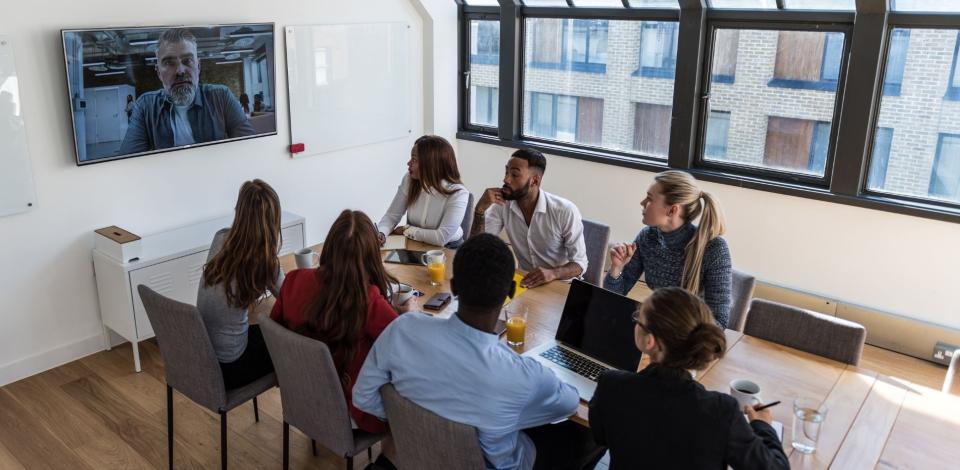Best Practices for Meetings in a Hybrid World
Considerations to ensure your next hybrid meeting is successful, productive, and inclusive

While the seemingly overnight shift to a virtual environment was initially jarring, workforces readily adapted and seized its many benefits, including access to a larger talent pool, less overhead, more flexibility, and even environmental benefits. As remote work continues to perpetuate the post-pandemic workplace, now many workforces are also returning to the in-person setting at least for a portion of time, presenting a dynamic challenge.
From geographic location separations to varying connection modalities, management of these disbursed workforces requires special consideration. This additional layer of navigation will also require learning and rethinking from leaders and teams alike. One place this new challenge will be most relevant is one of the foundations of workforce productivity: meetings. How do we approach the idea of a meeting in this transitionary time, and how can we ensure its effectiveness? As you plan for your next hybrid meeting, here are a few things to consider to make it a success.
Meet or Not
First, consider whether you need a meeting at all. Not every discussion or action necessitates a meeting. Even pre-pandemic, a lot has been written to guide this decision, including questions you should ask before the meeting and an infographic to serve as a decision tree.
"By definition, a hybrid meeting utilizes technology to connect groups of people both in-person and virtually," notes Yakut Gazi, associate dean for Learning Systems at Georgia Tech Professional Education and expert in the field of distance and virtual learning.
"While virtual meetings can be difficult, hybrid meetings are more complicated, making it important to consider their purpose carefully."
If you decide that a meeting is necessary, consider how much time to allocate for it. While you'll need a sufficient amount of time for proper idea generation, discussion, brainstorming, and decision making, this does not mean that the default meeting length should be one hour. Taking the time to make a schedule or agenda will help to determine an appropriate but efficient meeting length. Also, consider allocating 5- to 10-minute transition times in between meetings to allow for in-person participants to get to their next meeting and to allow the remote participants to take a digital break to support their well-being.
Online Versus Hybrid
If one person must attend online, should you move the entire meeting online? In general, complexity is reduced when everyone is online. And, if the meeting is a regularly scheduled, periodic meeting, an online format usually produces the best outcomes. However, if the meeting is a “cornerstone experience,” there is still a great benefit to at least some people being in-person. These experiences may include situations in which a new employee is joining the team, visitors are hosted, or a hands-on activity is performed.
"In these scenarios, consider encouraging in-person participants to bring their laptops and connect via video only, while providing an audio connection through the room system or one person's computer," says Gazi.
"This will create a more inclusive environment for everyone in the meeting, in-person and remote, and also reduce the chaos that is often associated with hybrid meetings."
Ensure Hybrid Meeting Success
Everyone takes part in the success of a meeting. However, it is the responsibility of the meeting moderator to ensure a positive outcome for all participants.
"Begin by encouraging yourself and others to develop fluency and comfort with the technologies for hybrid and virtual meetings," reminds Gazi. "This should be a continuous effort within your organization so that everyone is equipped to handle the new requirements of a hybrid workplace."
Then, consider all meeting preparations ahead of time, including a strategy for engagement and inclusion during the meeting.
While the loss of standard in-person work has complicated significant pillars in workplace interaction — including water cooler conversations, desk walk-bys, and collaborative activities — this new era in work also provides opportunities.
With the addition of virtual communication, Gazi is hopeful we can include more people in decisions and projects than before, regardless of their geographic location, and travel commutes no longer have to impede business flow. "As long as the focus continues to remain on people, both within organizations and without, we can create a hybrid environment that incorporates the best of in-person and remote work."
Editor: Shannon Helton-Amos
Digital Producer: Kelsey Harris

